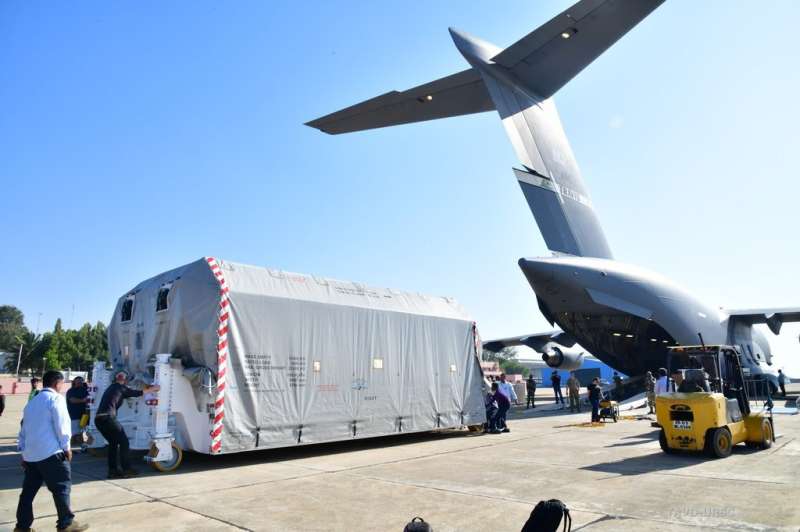
The NISAR Earth science mission has moved a step closer to its 2024 launch. Its science payload of two radar systems, one built by NASA and the other by the Indian Space Research Organization (ISRO), recently completed the journey from NASA’s Jet Propulsion Laboratory in Southern California to ISRO’s U R Rao Satellite Center in Bengaluru, India. Soon, teams at the facility will combine the radar systems with the satellite’s body, or bus, and run it through tests in advance of its three-year mission.
Short for NASA-ISRO Synthetic Aperture Radar, NISAR will observe nearly all of Earth’s land and ice surfaces twice every 12 days, measuring movements in extremely fine detail. It will also survey forests and agricultural regions to help scientists understand carbon exchange between plants and the atmosphere.
NISAR’s payload will be the most advanced radar system ever launched as part of a NASA science mission, and it will feature the largest-ever radar antenna of its kind: a drum-shaped, wire mesh reflector nearly 40 feet (12 meters) in diameter that will extend from a 30-foot (9-meter) boom.
The mission’s science instruments consist of L- and S-band radar, so named to indicate the wavelengths of their signals. ISRO built the S-band radar, which it shipped to JPL in March 2021. Engineers spent much of the last two years integrating the instrument with the JPL-built L-band system, then conducting tests to verify they work well together.
In late February 2023, technicians and engineers working in a JPL clean room put the science payload into a specially designed shipping container before hoisting it onto a flatbed truck for the drive to March Air Reserve Base in California’s Riverside County. A U.S. Air Force C-17 cargo plane carried it from there to Bengaluru, touching down on March 6.
The next time the satellite is airborne will be aboard ISRO’s Geosynchronous Satellite Launch Vehicle Mark II rocket, which is set to lift off in 2024 from Satish Dhawan Space Center on India’s southeastern coast and deliver NISAR into a near-polar Earth orbit.
Once in operation, NISAR will be able to collect measurements day and night, in all weather conditions, and its trove of data will help researchers better understand a broad range of Earth science topics, including landslides, groundwater loss, and the carbon cycle.
Provided by
Jet Propulsion Laboratory
NASA-ISRO science instruments arrive in India ahead of 2024 launch (2023, March 8)
retrieved 9 March 2023
from https://phys.org/news/2023-03-nasa-isro-science-instruments-india.html
part may be reproduced without the written permission. The content is provided for information purposes only.